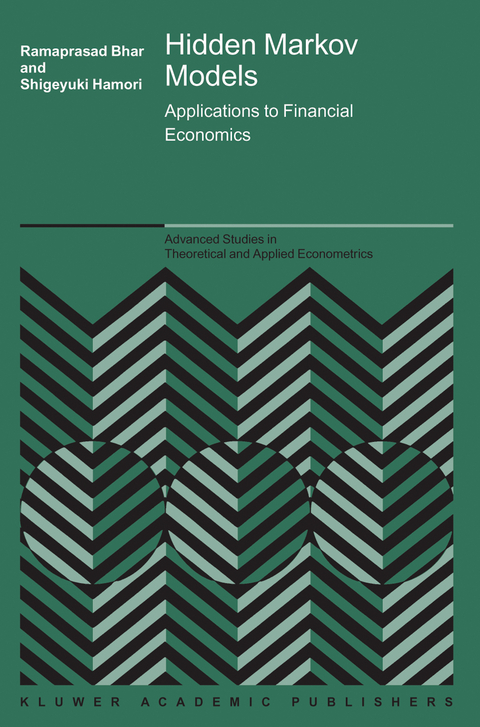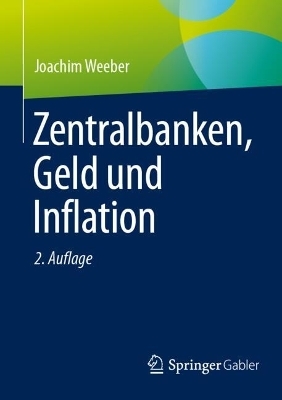
Hidden Markov Models
Applications to Financial Economics
Seiten
2010
|
Softcover reprint of the original 1st ed. 2004
Springer-Verlag New York Inc.
978-1-4419-5448-0 (ISBN)
Springer-Verlag New York Inc.
978-1-4419-5448-0 (ISBN)
Markov chains have increasingly become useful way of capturing stochastic nature of many economic and financial variables. The main aim of Hidden Markov Models: Applications to Financial Economics is to make such techniques available to more researchers in financial economics.
Markov chains have increasingly become useful way of capturing stochastic nature of many economic and financial variables. Although the hidden Markov processes have been widely employed for some time in many engineering applications e.g. speech recognition, its effectiveness has now been recognized in areas of social science research as well. The main aim of Hidden Markov Models: Applications to Financial Economics is to make such techniques available to more researchers in financial economics. As such we only cover the necessary theoretical aspects in each chapter while focusing on real life applications using contemporary data mainly from OECD group of countries. The underlying assumption here is that the researchers in financial economics would be familiar with such application although empirical techniques would be more traditional econometrics. Keeping the application level in a more familiar level, we focus on the methodology based on hidden Markov processes. This will, we believe, help the reader to develop more in-depth understanding of the modeling issues thereby benefiting their future research.
Markov chains have increasingly become useful way of capturing stochastic nature of many economic and financial variables. Although the hidden Markov processes have been widely employed for some time in many engineering applications e.g. speech recognition, its effectiveness has now been recognized in areas of social science research as well. The main aim of Hidden Markov Models: Applications to Financial Economics is to make such techniques available to more researchers in financial economics. As such we only cover the necessary theoretical aspects in each chapter while focusing on real life applications using contemporary data mainly from OECD group of countries. The underlying assumption here is that the researchers in financial economics would be familiar with such application although empirical techniques would be more traditional econometrics. Keeping the application level in a more familiar level, we focus on the methodology based on hidden Markov processes. This will, we believe, help the reader to develop more in-depth understanding of the modeling issues thereby benefiting their future research.
Volatility in Growth Rate of Real GDP.- Linkages Among G7 Stock Markets.- Interplay between Industrial Production and Stock Market.- Linking Inflation and Inflation Uncertainty.- Exploring Permanent and Transitory Components of Stock Return.- Exploring the Relationship between Coincident Financial Market Indicators.
| Erscheint lt. Verlag | 7.12.2010 |
|---|---|
| Reihe/Serie | Advanced Studies in Theoretical and Applied Econometrics ; 40 |
| Zusatzinfo | XVIII, 162 p. |
| Verlagsort | New York, NY |
| Sprache | englisch |
| Maße | 155 x 235 mm |
| Themenwelt | Sozialwissenschaften ► Politik / Verwaltung ► Staat / Verwaltung |
| Wirtschaft ► Allgemeines / Lexika | |
| Wirtschaft ► Betriebswirtschaft / Management ► Finanzierung | |
| Wirtschaft ► Volkswirtschaftslehre ► Makroökonomie | |
| Wirtschaft ► Volkswirtschaftslehre ► Mikroökonomie | |
| Wirtschaft ► Volkswirtschaftslehre ► Ökonometrie | |
| Wirtschaft ► Volkswirtschaftslehre ► Wirtschaftspolitik | |
| ISBN-10 | 1-4419-5448-1 / 1441954481 |
| ISBN-13 | 978-1-4419-5448-0 / 9781441954480 |
| Zustand | Neuware |
| Haben Sie eine Frage zum Produkt? |
Mehr entdecken
aus dem Bereich
aus dem Bereich
Organisationen steuern, Strukturen schaffen, Prozesse gestalten
Buch | Softcover (2024)
Rehm Verlag
38,00 €
Buch | Softcover (2024)
Springer Fachmedien Wiesbaden GmbH (Verlag)
29,99 €


